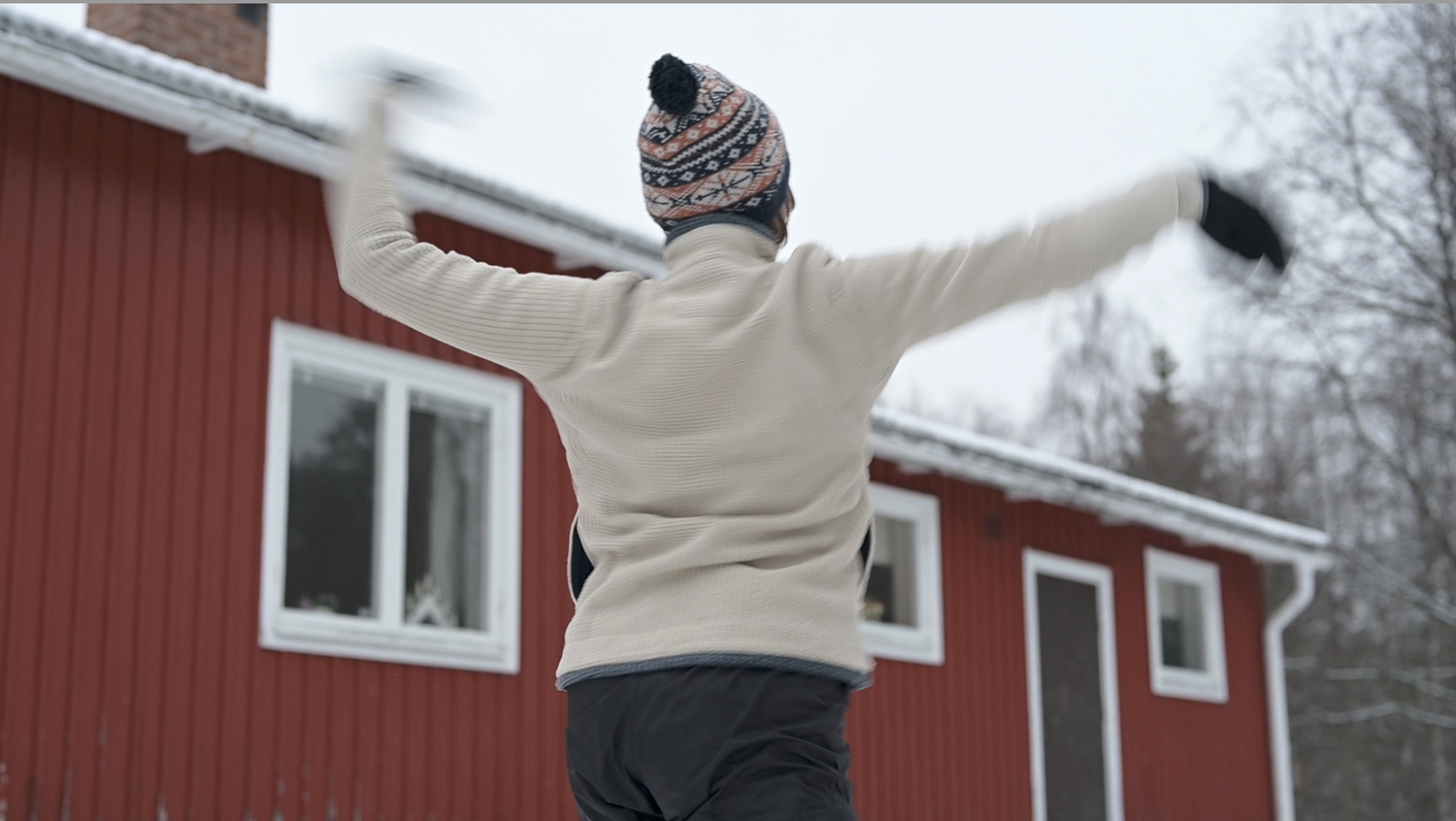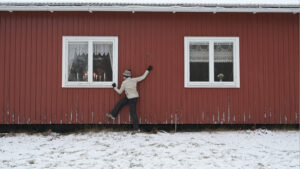
When I was a child I danced in the backyard of my parent’s house. It was an open space. The space invited activity of movement and play. Play connects back to joy and is something I can find missing in my artistic practice when conceptualisation takes centre stage. Where might a sense of joyful playfulness find a place in my everyday life and movement-based research?
Today, day four, we chose to film in the backyard of the house we are staying in within the village of Moskosel. I invited dance artist Natalia Drozd to support my delving into playfulness. We started with simple prompts such as walk, stand, run, gesture. She then called out prompts from the side, keeping me in a continuous loop of movement that reminded me of the work of Trisha Brown and Yvonne Rainer (for whom I work for as a dancer) and the way task-like actions can make up a dance and contribute to a ‘do first, then think’ attitude. There is something about the circulatory nature of prompting movement with words, which is witnessed by the prompter and responded to with another prompt, keeping the ongoing cycle of call and response alive.
I am thinking about what circulatory or circulations might mean for artists working in outdoor landscapes and relational practices. What do we take and give back to the spaces and places we inhabit, visit, play with and feel? How can our exchange be circulatory and equitable? Does dance offer up anything to this enquiry?
This leads me to a suggestion by my colleague Thomas Körtvélyessy to consider such relational practices in landscapes of this Sápma territory, potentially surrounded by indigenous / First-Nation expertise around these very questions, developed over many centuries. On an initial search I came upon the work of Karolina Sevä who locally works with traditional Sami craftsmanship, duodji. She explains the ecological process of tanning leather and the value of tradition passed down through generations as a circular economy of Sami people, indigenous to this region.
These are interests to learn through exchange remain alive for us as we continue our relationship with visiting artists, local citizens and the spaces and places of Moskosel.

Christian Kipp & Sara Wookey
www.christiankipp.com / www.sarawookey.com
References